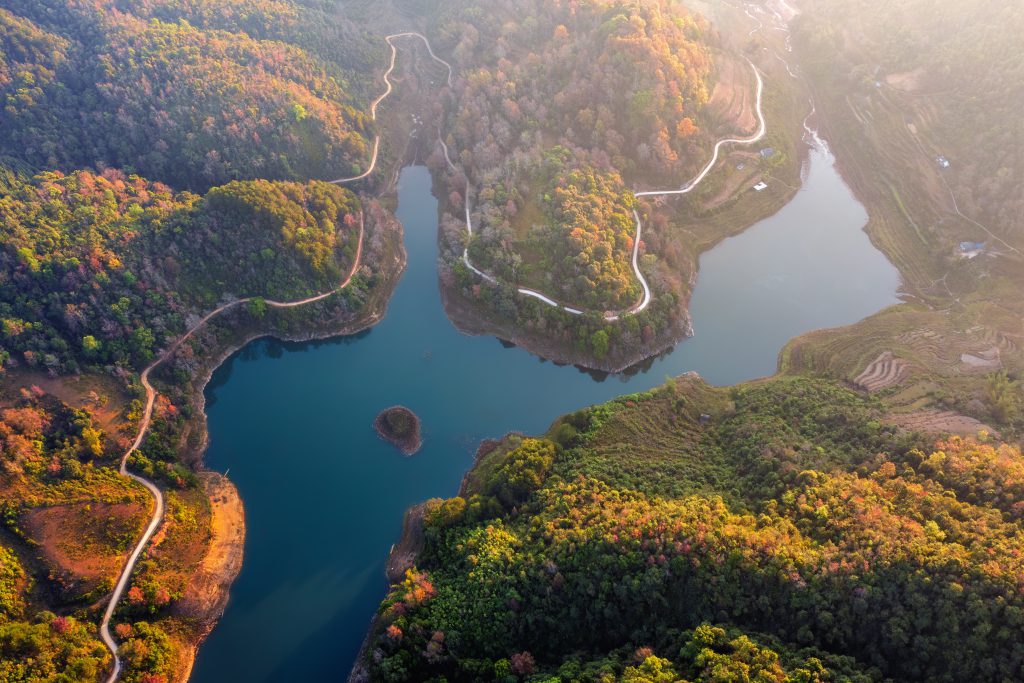Dan Khoi
While many people set off to admire ripening rice fields and mountains peaking above the clouds, when winter arrives, I like to explore the dry season in the enchanting land of Cao Bang.
Vibrant yellow wild sunflowers in full bloom welcomed us on both sides of the winding mountain road. Perhaps the sunflowers gather the winter sun, adorning their petals to shine brilliantly. Despite the winding road, picturesque scenes of blooming flowers and rolling hills made us forget our fatigue.

Our first stop was the Ba Quang grassy hills in Vinh Quy commune, Ha Lang district. After a 15-minute hike to the hilltop, I was overwhelmed by the scene before my eyes. Golden grassy hills stretched endlessly into the distant mountains. In the chilly weather, the wild, desolate sunset turned the hill into the color of burnt grass. Here and there, a few young people had set up tents. My son and I quickly pitched our lovely tent and collected firewood to start a fire to keep warm.
The next morning, we ventured into the Luc Khu region in Ha Quang district, often referred to as the rocky highlands of Cao Bang. This challenging route features steep ascents and consecutive sharp bends. Houses with traditional tiled roofs blend with the landscape, appearing amidst the mountains and hills. I constantly sought safe spots to stop the car and admire the landscape and capture photos of the endless slopes covered with Formosan gum trees. Visiting a Tay ethnic village, my young son and I took the time to chat and share candies with some local children. Their innocent gazes followed us as our wheels rolled away from their village.

We arrived at Na Tau Lake in Be Trieu commune, Hoa An district, just before nightfall. At the start of winter, this place is known for its dreamy landscape since the leaves of the Formosan gum trees turn shades of red. Even after sunset, the red leaves along the water’s edge created a beautiful scene. Fishermen were gracefully casting their nets over the peaceful water. The scene became even more charming as the moon rose, its gentle light filling the serene space. It had been a long time since I had last enjoyed a moonlit night in the countryside, evoking many nostalgic and peaceful memories.
I chose Trung Khanh as the final destination of our journey because I wanted to spend more time enjoying its famous natural beauty. Recent cold fronts had caused the forest to start changing color. The leaves were especially vivid around Ban Viet Lake, a vast freshwater lake of about five hectares, often described as a green jewel amidst the majestic mountains. Nestled by the lake are Tay and Nung villages, where people live peacefully.

White fluffy clouds were reflected on the surface of tranquil and clear Ban Viet Lake. Especially lovely were the rows of Formosan gum trees lining the lake. As the red leaves fall, more and more travelers flock here to hike on the path around the lake.
About three kilometers from Ban Viet Lake lies Ban Gioc Waterfall, an iconic symbol of Cao Bang and a landmark in our nation’s border region. Each season, this magnificent waterfall exhibits a different kind of beauty. The rainy season typically lasts from June to September, when the waterfall gushes with foamy white water. In the dry season from October to May, the waterfall flows gently, resembling long strands of silk spread across the rocks. During this season, it’s no exaggeration to describe Ban Gioc Waterfall as a “bashful maiden of the mountains and forests”.
As we finished our journey full of romantic and peaceful moments in this picturesque land, I felt that we had experienced the gentlest season in Cao Bang.










